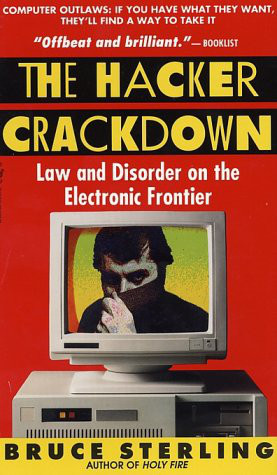Simon Emmerson (ed.): Music, Electronic Media, and Culture (2000)
Filed under book | Tags: · acoustics, electroacoustic music, electronic music, plunderphonics, radio art, sound recording, technology
Technology revolutionised the ways that music was produced in the twentieth century. As that century drew to a close and a new century begins a new revolution in roles is underway. The separate categories of composer, performer, distributor and listener are being challenged, while the sounds of the world itself become available for musical use. All kinds of sounds are now brought into the remit of composition, enabling the music of others to be sampled (or plundered), including that of unwitting musicians from non-western cultures. This sound world may appear contradictory – stimulating and invigorating as well as exploitative and destructive. This book addresses some of the issues now posed by the brave new world of music produced with technology.
Contents: Introduction, Simon Emmerson; Part One: Listening and interpreting: Through and around the acousmatic: the interpretation of electroacoustic sounds, Luke Windsor; Simulation and reality: the new sonic objects, Ambrose Field; Beyond the acousmatic: hybrid tendencies in electroacoustic music, Simon Waters; Part Two: Cultural noise: Plunderphonics, Chris Cutler; Crossing cultural boundaries through technology?, Simon Emmerson; Cacophony, Robert Worby; Part Three: New places, spaces and narratives: Art on air: a proile of new radio art, Kersten Glandien; ‘Losing touch’? the human performer and electronics, Simon Emmerson; Stepping outside for a moment: narrative space in two works for sound alone, Katharine Norman; Index.
Publisher Ashgate, 2000
ISBN 0754601099, 9780754601098
252 pages
PDF (updated on 2012-8-3)
Comment (0)Larry Gross, John Stuart Katz, Jay Ruby (eds.): Image Ethics: The Moral Rights of Subjects in Photographs, Film, and Television (1991)
Filed under book | Tags: · cinema, docudrama, documentary film, film, mass media, photography, privacy, television

This pathbreaking collection of thirteen original essays examines the moral rights of the subjects of documentary film, photography, and television. Image makers–photographers and filmmakers–are coming under increasing criticism for presenting images of people that are considered intrusive and embarrassing to the subject. Portraying subjects in a “false light,” appropriating their images, and failing to secure “informed consent” are all practices that intensify the debate between advocates of the right to privacy and the public’s right to know. Discussing these questions from a variety of perspectives, the authors here explore such issues as informed consent, the “right” of individuals and minority groups to be represented fairly and accurately, the right of individuals to profit from their own image, and the peculiar moral obligations of minorities who image themselves and the producers of autobiographical documentaries. The book includes a series of provocative case studies on: the documentaries of Frederick Wiseman, particularly Titicut Follies ; British documentaries of the 1930s; the libel suit of General Westmoreland against CBS News; the film Witness and its portrayal of the Amish; the film The Gods Must be Crazy and its portrayal of the San people of southern Africa; and the treatment of Arabs and gays on television. The first book to explore the moral issues peculiar to the production of visual images, Image Ethics will interest a wide range of general readers and students and specialists in film and television production, photography, communications, media, and the social sciences.
Publisher Oxford University Press US, 1991
ISBN 0195067800, 9780195067804
400 pages
PDF (updated on 2012-7-14)
Comment (0)Bruce Sterling: The Hacker Crackdown: Law and Disorder on the Electronic Frontier (1992–) [EN, ES, CZ]
Filed under book | Tags: · cyberspace, hacker culture, hacking, software, telephone

“The AT&T long-distance network crashes, and millions of calls go unanswered. A computer hacker reprograms a switching station, and calls to a Florida probation office are shunted to a New York phone-sex hotline. An underground computer bulletin board publishes a pilfered BellSouth document on the 911 emergency system, making it available to anyone who dials up. How did so much illicit power reach the hands of an undisciplined few – and what should be done about it?
The book discusses watershed events in the hacker subculture in the early 1990s. The most notable topic covered is Operation Sundevil and the events surrounding the 1987-1990 war on the Legion of Doom network: the raid on Steve Jackson Games, the trial of ‘Knight Lightning’ (one of the original journalists of Phrack), and the subsequent formation of the Electronic Frontier Foundation. The book also profiles the likes of ‘Emmanuel Goldstein’ (publisher of 2600: The Hacker Quarterly), the former Assistant Attorney General of Arizona Gail Thackeray, FLETC instructor Carlton Fitzpatrick, Mitch Kapor, and John Perry Barlow.”
In 1994, Sterling released the book for the Internet with a new afterword.
Publisher Bantam Books, 1992
Literary Freeware: Not for Commercial Use
ISBN 055356370X
323 pages
The Hacker Crackdown (English, 1992/1994, HTML, EPUB, Kindle, TXT)
The Hacker Crackdown (English, audiobook, read by Cory Doctorow, 2008, MP3, OGG)
Le Caza des Hackers. Ley y Desorden en la Frontera Electrónica (Spanish, trans. trans. El Equipo de Traductores de Kriptópolis, 1999, added on 2020-4-13)
Zátah na hackery (Czech, trans. Václav Bárta, 2004, HTML, updated on 2020-4-12)

